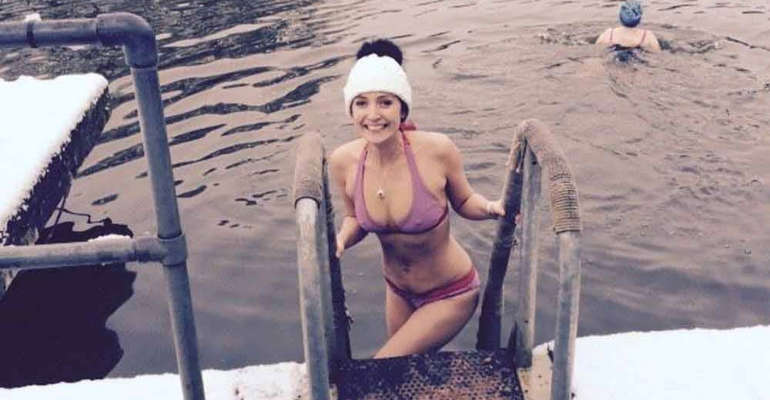
An adrenaline junkie who hails swimming in freezing cold water as her salvation from constant pain after 20 operations because of hypermobile joints that dislocate in her sleep, has written a novel inspired by her experience.
Often in agony growing up, advertising professional Charlotte Leonard, 41, started to think her problems were psychosomatic until she reached 30 and was finally diagnosed with Ehlers-Danlos syndrome hypermobility type — an often inherited condition causing unusually flexible joints.
Prescribed a cocktail of medication over subsequent years, she reacted badly to many drugs and was finally offered liquid ketamine — commonly used as an animal anaesthetic — but had a eureka moment and discovered cold water swimming as a mood boosting pain reliever.
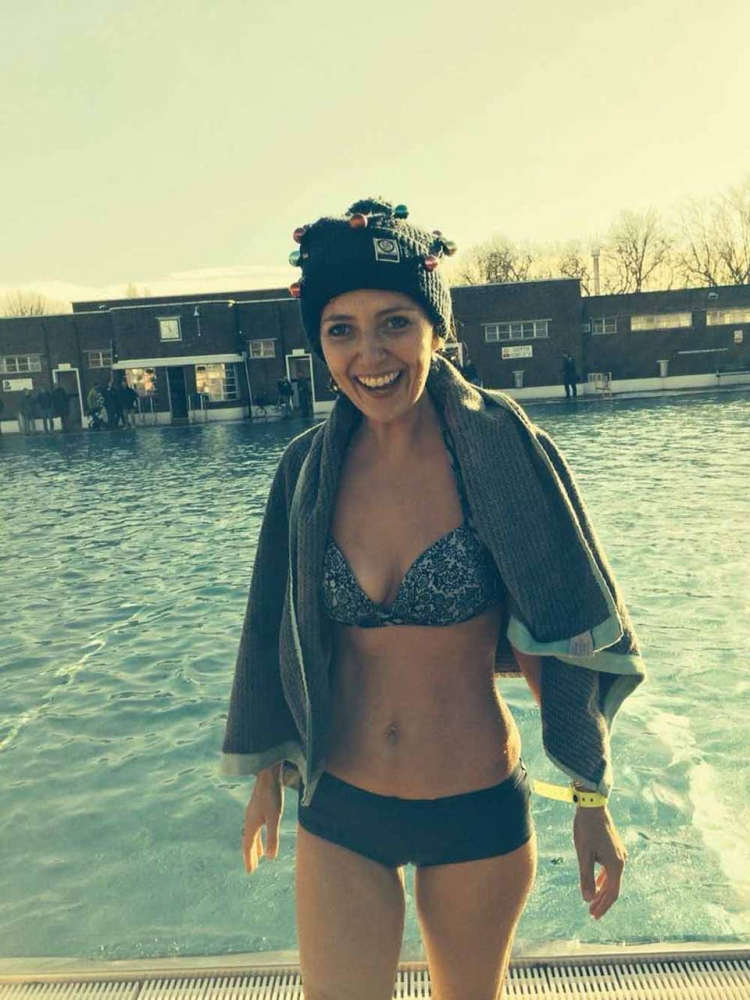
Charlotte swimming at Parliament Hill Lido in November 2018 (Collect/PA Real Life).
Charlotte lives in Muswell Hill, north London, with her entrepreneur husband Nils Leonard, 44, and their sons Jack, 16, Finn, 14, and Noah, 11.
A lover of extreme challenges from skydiving to bungee jumping despite her condition, she said:
“Swimming replaced drugs for me and it has worked so much better without any side effects.
“At school, I kept getting joint pain and was just told I was growing.”
Spending large swathes of her childhood suffering from aching joints which were chalked off as growing pains, her symptoms continued to baffle doctors.
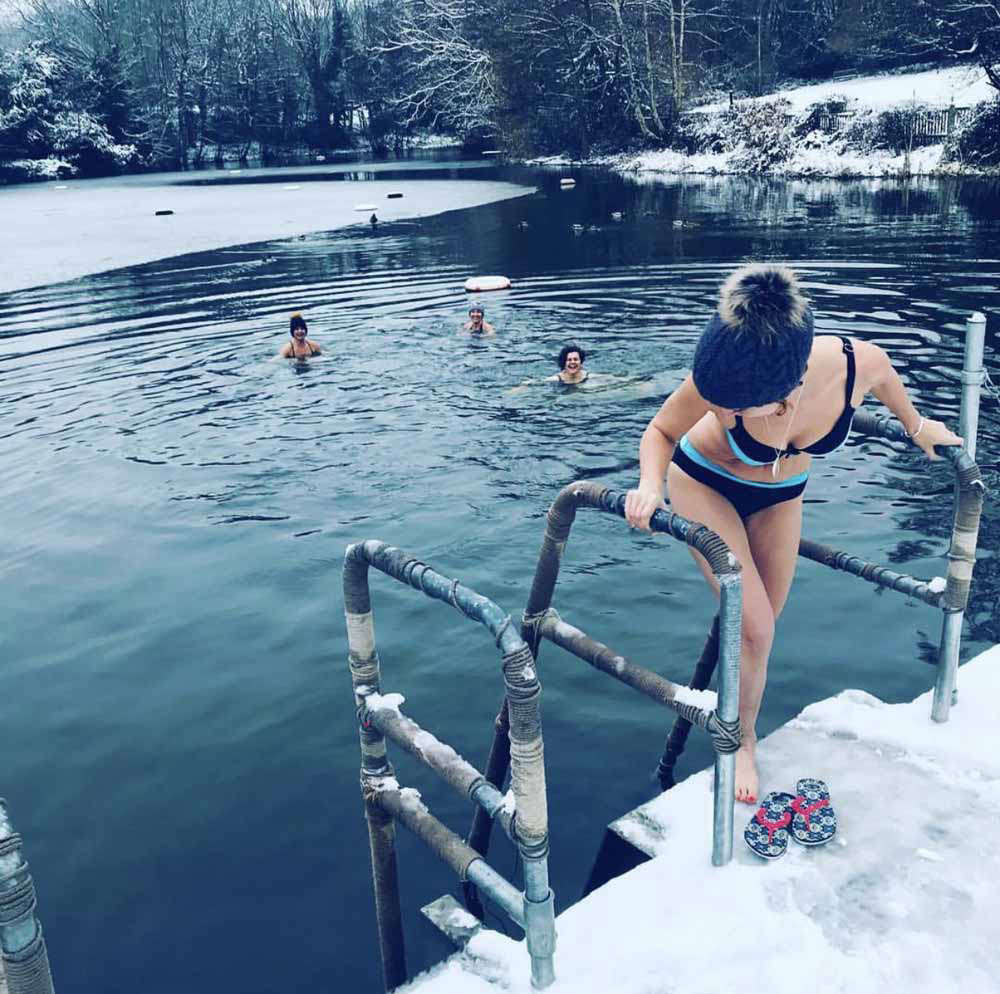
Kenwood Ladies Pond in February 2019 (Collect/PA Real Life).
She added:
“I thought it must be what everyone goes through and what everyone feels.
“I was born with this condition, so I didn’t know any different.”
But, even as a child, she remembers the pleasure of swimming in the sea in Cornwall where she grew-up and how it helped her to forget about her pain.
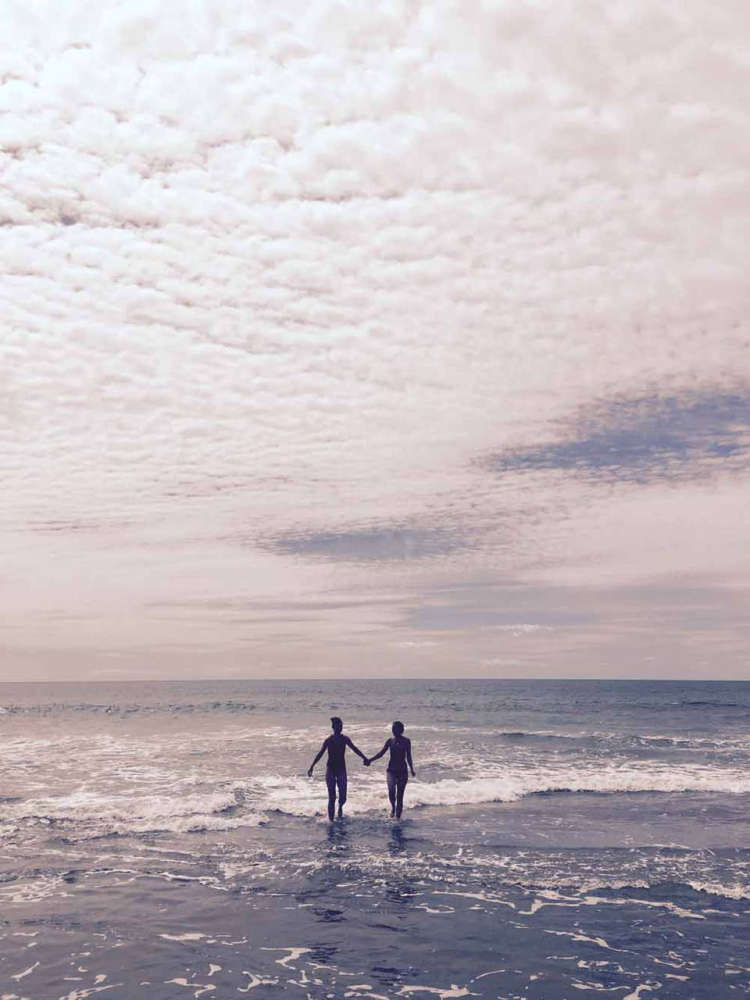
Charlotte with her sister in the sea after spreading her grandparents’ ashes in May 2016 (Collect/PA Real Life).
Refusing to let her persistent injuries – which saw her break fingers, fracture her elbow ice skating and break her foot amongst other things – hold her back, she continued to enjoy sports like skiing even though she has also broken her arm enjoying the winter sport.
Charlotte once ended up with a plaster cast on her entire leg after simply stubbing her toe, because her fifth metatarsal smashed.
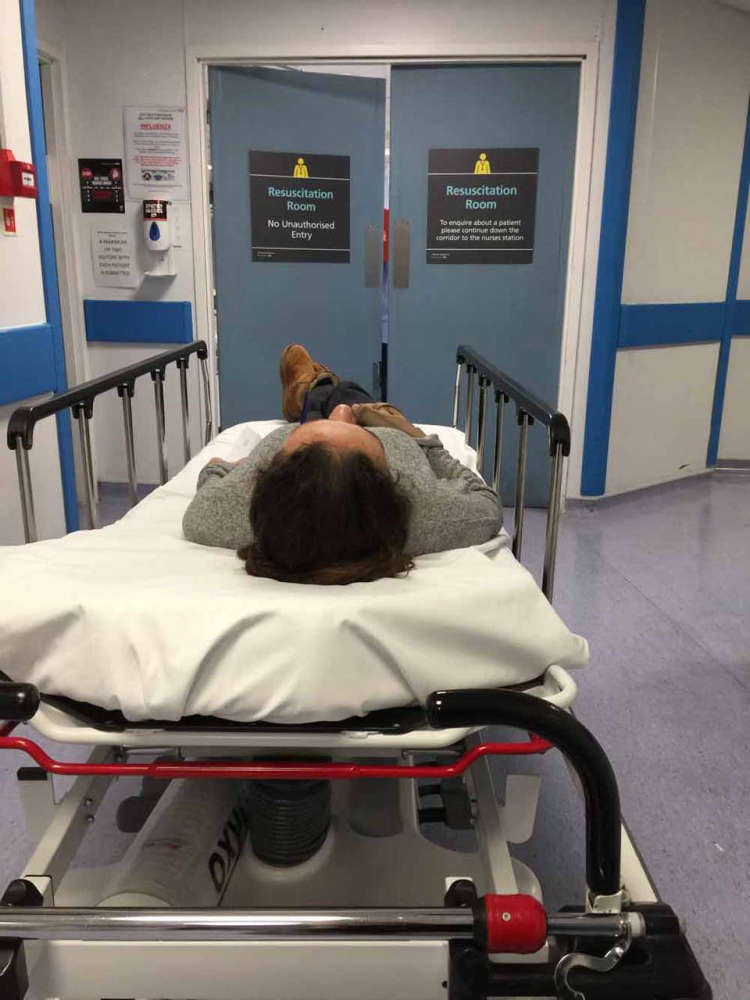
Charlotte needed emergency surgery at the Whittington Hospital in 2013 (Collect/PA Real Life).
She said:
“I’ve had 20 general anaesthetics in the last 15 years when I’ve had operations to fix things I’ve broken like my elbow, where I had three surgeries.
“I stubbed my little toe on a door and ended up with a plaster cast up to my knee.”
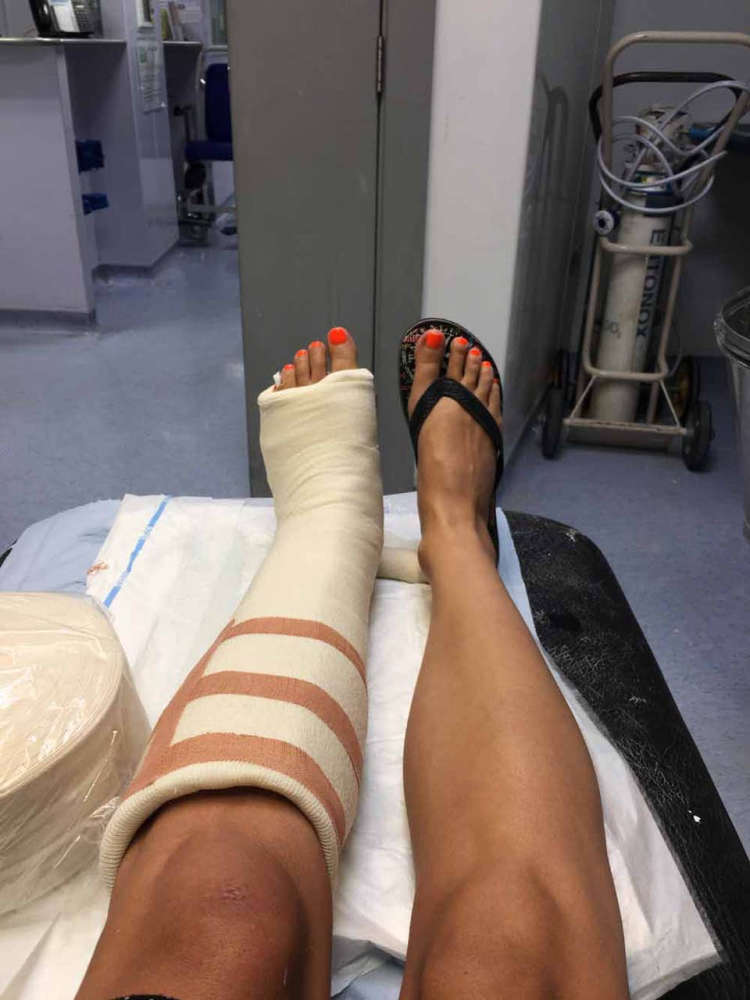
Charlotte stubbed her toe which caused a fracture of the fifth metatarsal in July 2016 (Collect/PA Real Life).
After a succession of specialists were unable to give her a specific diagnosis, fearing her aches and pains were psychosomatic, Charlotte even consulted a psychiatrist when she was in her 30s, who assured her that her pain had a physical cause.
She said: “I’d seen a huge number of doctors over the years who couldn’t tell me what was wrong, but I knew something was.
“I started to think it was all in my head, because I couldn’t explain it. I went to see a psychiatrist because I just wanted some clarity.”
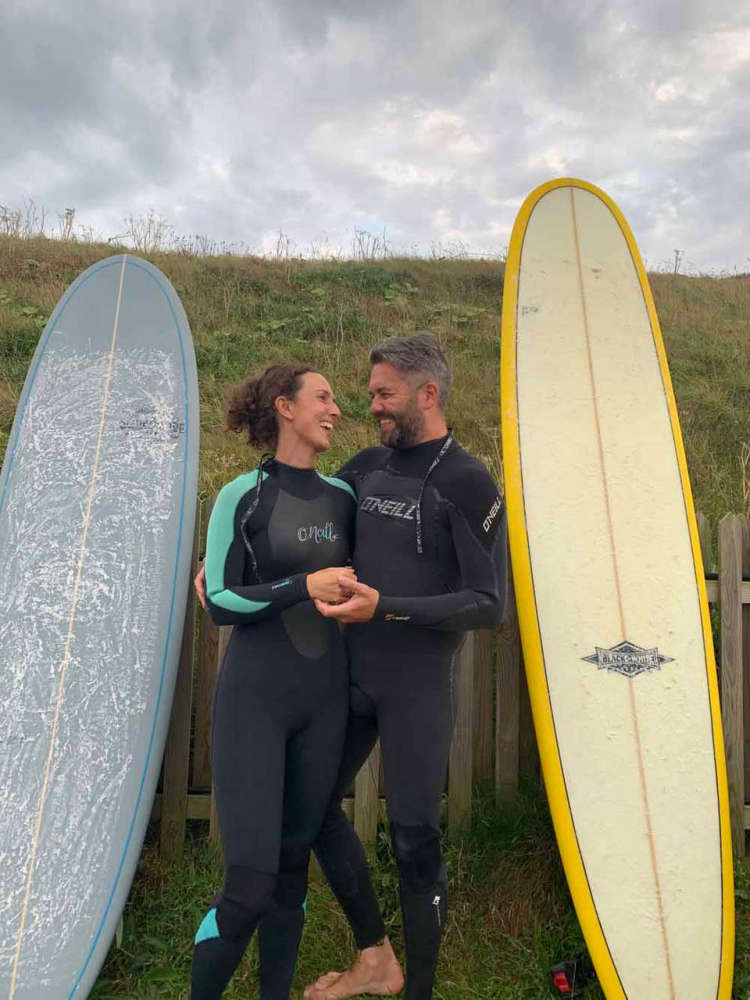
Charlotte and her husband, Nils, surfing in Newquay in September 2019 (Collect/PA Real Life).
By the time she had her third son, Noah, in 2011, Charlotte’s pain became unbearable and she went to see a specialist at Charing Cross Hospital in London.
After investigating her family history, a doctor at the Pain Clinic at Charing Cross Hospital discovered she had Ehlers-Danlos syndrome.
Despairing at the thought of a lifetime taking heavy painkillers, many of which triggered reactions, she felt thoroughly depressed.
She said:
“I’m allergic to a lot of drugs. I spent the first year after the diagnosis trying absolutely everything and I would end up with a rash, or I’d fall asleep somewhere I shouldn’t.
“The medication was creating even more problems.”
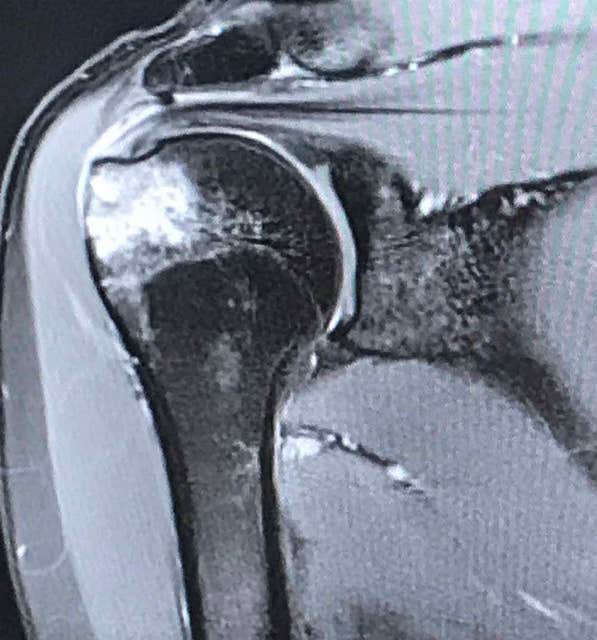
Charlotte fractured her humerus in April 2019 (Collect/PA Real Life).
Further dismayed as she read stories of other people with the condition, she feared her future looked bleak.
Her final turning point came when she was offered liquid ketamine in early 2014 to kill the pain.
Determined to live her life on her own terms, remembering how she would “lose herself” and her worries as a child, when she swam in the seas and rivers in Cornwall, she wondered if this could be her salvation.
So, in 2014, from September onwards, once there was a nip in the air, she started swimming in Kenwood Ladies’ Pond on Hampstead Heath in north London.
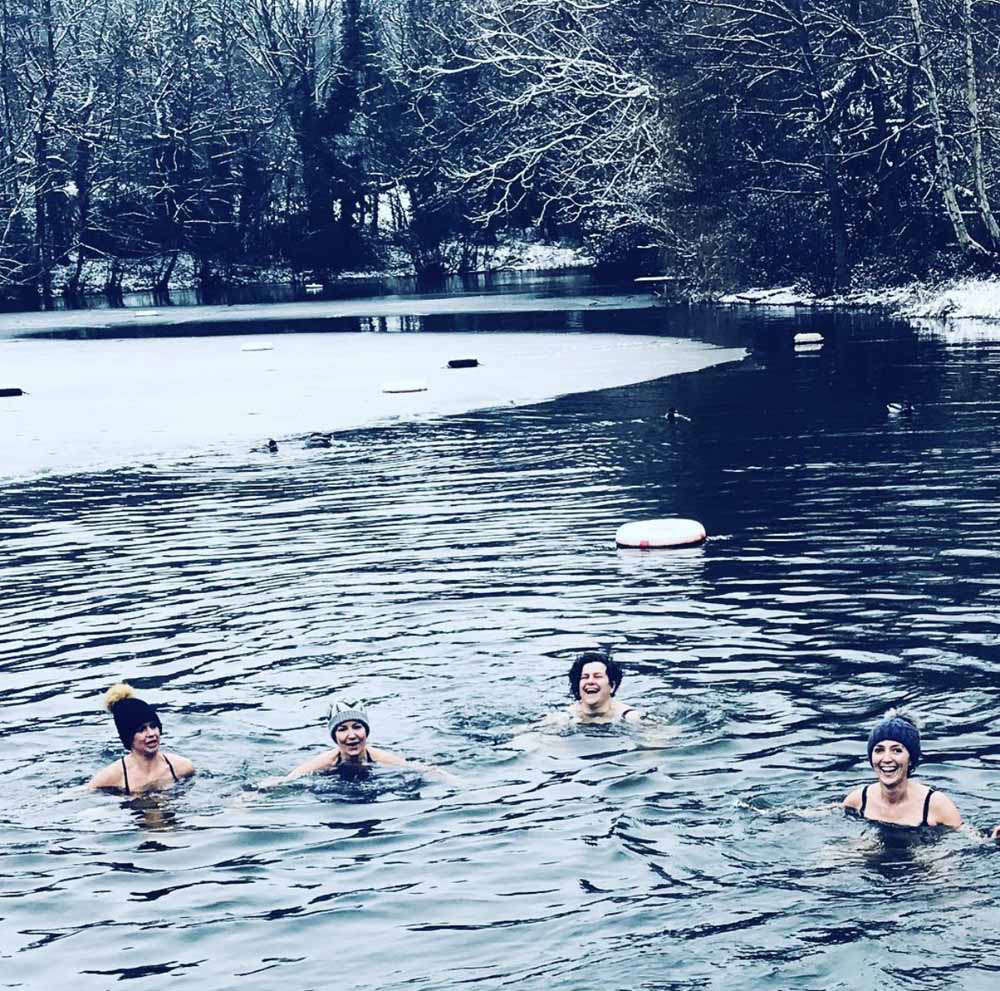
Charlotte with friends at Kenwood Ladies Pond in February 2019 (Collect/PA Real Life).
Reinvigorated by her surroundings and the challenge of swimming in the chilly water, she found her adrenaline pumping again.
Suddenly her world opened up, as she delighted in taking her family to the River Thames outside London, the Irish Sea and to an array of rivers, lakes and even quarries in Cornwall, where she would swim to her heart’s content.
As well as recreating the buzz she had experienced from extreme challenges, through cold water or wild swimming she found a community of women who joined her in what has now become a popular activity.
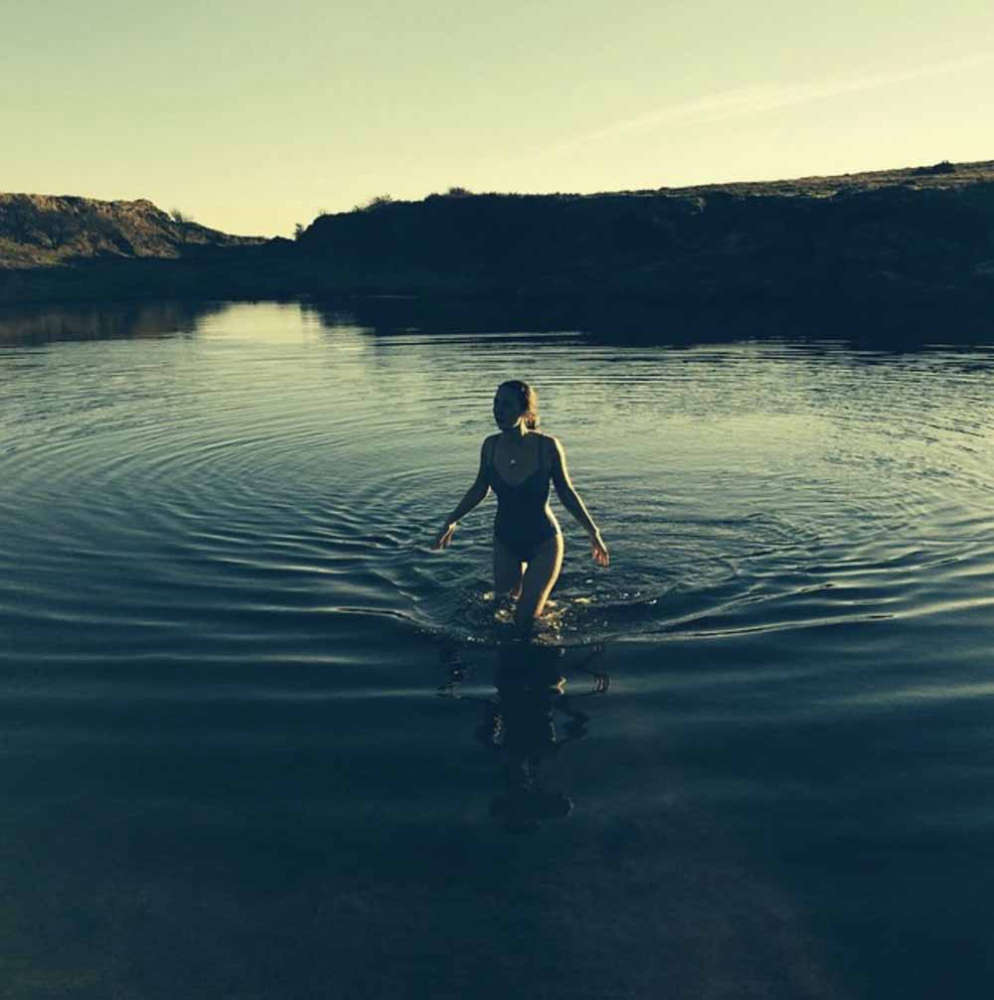
Charlotte at Bodmin Moor, Cornwall in December 2014 (Collect/PA Real Life).
As well as lifting her spirits, swimming has replaced her pain medication.
She said:
“It makes me feel so much better that I don’t have to take painkillers, which is so positive.”
And using the way in which swimming has helped her to combat her grief over the life she has lost as a springboard, she has been inspired by her experience to write a novel, Afterwards, which is being published on April 14 by Simon and Schuster.
It tells the story of a widow who finds her husband dead and travels to Cornwall to unravel the truth about what happened, where she meets cold water swimmers who support her through her grief.
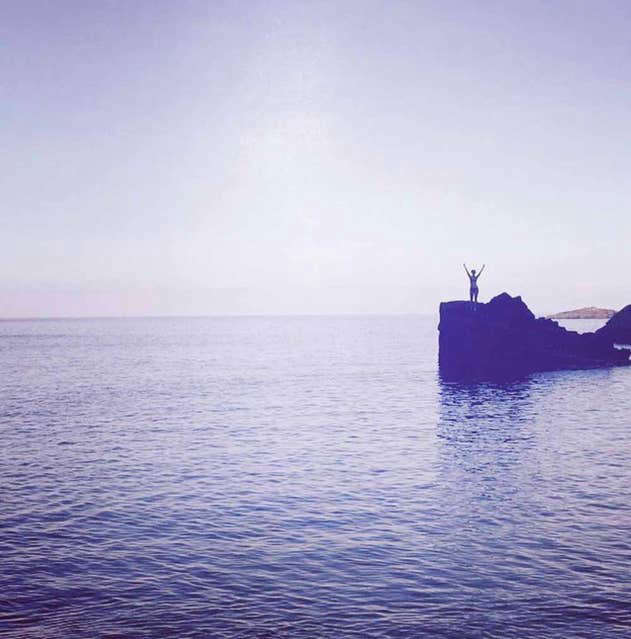
Charlotte at Tintagel in Cornwall in January 2022 (Collect/PA Real Life).
Charlotte said:
“I understand the support the cold water swimming community provides.
“My own personal support network comes in the form of family, a very close group of friends and the cold-water swimmers at Kenwood Ladies’ Pond.”

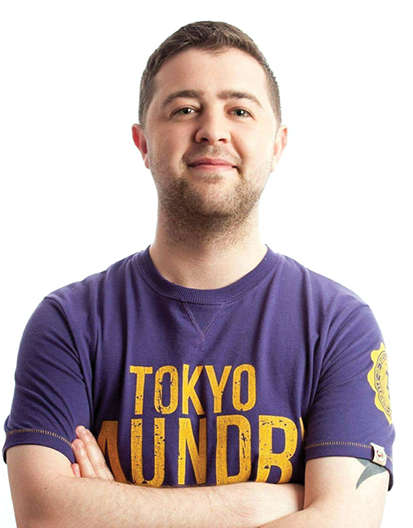
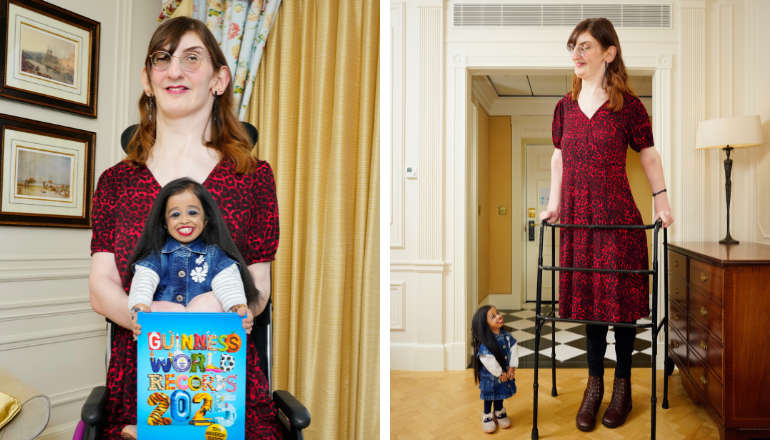 World's Tallest And Shortest Women Meet For First Time To Celebrate Guinness World Records Day 2024
World's Tallest And Shortest Women Meet For First Time To Celebrate Guinness World Records Day 2024
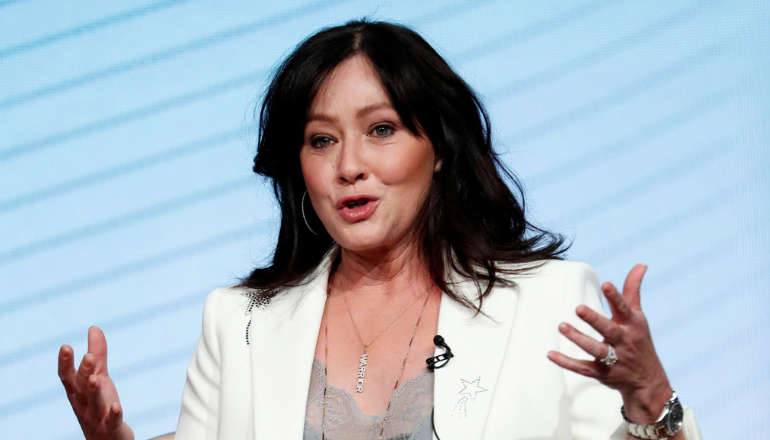 Shannen Doherty: Beverly Hills, 90210 Star Dies Aged 53
Shannen Doherty: Beverly Hills, 90210 Star Dies Aged 53
 Olivia Dean, Chaka Khan, Terence Trent D’Arby And Dionne Warwick Confirmed For Star-Studded Love Supreme
Olivia Dean, Chaka Khan, Terence Trent D’Arby And Dionne Warwick Confirmed For Star-Studded Love Supreme
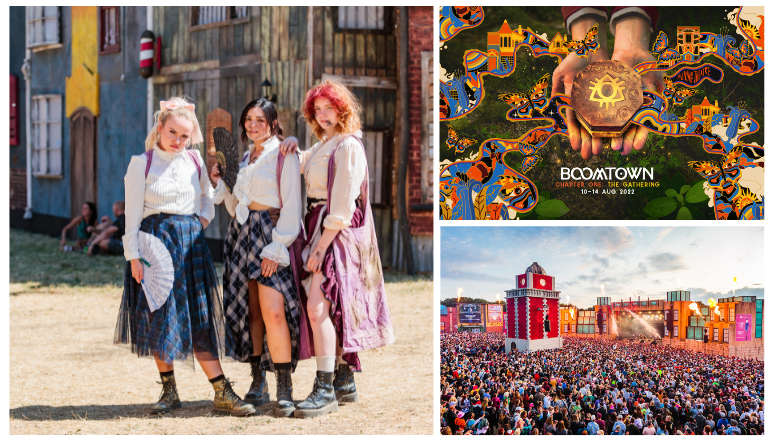 Boom Shakes The Room — Explosion of Colour And Happy Vibes At Spellbinding Gathering
Boom Shakes The Room — Explosion of Colour And Happy Vibes At Spellbinding Gathering
 Struggling To Sleep? New Research Names The Movies That Will Help
Struggling To Sleep? New Research Names The Movies That Will Help
Comments
Add a comment